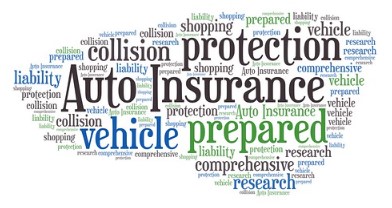As auto insurance policies vary, you might have coverage depending on your selected coverage. For example, collision coverage will cover damage to your vehicle if you get into a hydroplaning accident. Additionally, if the hydroplaning accident involves another car, your liability coverage will cover damages and injuries to the other vehicle and passengers. Talk to an agent if you have questions or concerns about your policy and its coverage. You can adjust your policy at any time.
Hydroplaning Explained

Hydroplaning happens when your tires fail to stay in contact with the road. Tire manufacturers design your tire to allow water to flow between the treads, thus helping your tires to stay in contact with the road. Sometimes, your tires will spin on the water above the road, which is known as hydroplaning. This means you lose traction and compromise your ability to steer and brake. Hydroplaning often ends in an uncontrollable skid.
Usually, hydroplaning occurs during the rain. However, you might drive over wet areas when it isn’t raining. For example, a fire hydrant might spray water on the road, or a water pipe could burst and cause an area to flood. In some circumstances, low-lying roads allow water to pool and remain wet long after the rain subsides.
Unfortunately, there is no hard and fast rule about how much water it takes to hydroplane. It could happen in light rain or a deluge. However, we know that the more water there is, the higher your risk of hydroplaning, and speed also factors into the equation. The faster you travel over wet roads, the more likely your tires will rise above the water. Think of it like a boat: boats plane off as they go faster, skimming across the top of the surface instead of plowing through it at low speeds.
The amount of tire tread you have impacts your traction. Severely worn tires present a much higher risk of hydroplaning because they don’t have the depth to allow water to flow between them.
Single-Car Hydroplaning Accidents
If you crash your car due to hydroplaning without another vehicle involved, collision coverage in your policy covers the cost to repair your vehicle subject to any deductible. In addition, if you sustain injuries from the accident, your medical or personal injury coverage will pay your medical bills.
If hydroplaning weren’t the cause, you would be deemed at fault in a single-car accident. However, weather-related factors like hydroplaning could lead to a no-fault decision by the insurance company. Furthermore, faulty equipment, such as your brakes failing or dangerous road conditions that persist without proper signage indicating a hazard, could result in a no-fault decision. In these cases, you might be able to file a claim against the car manufacturer or the municipality or business responsible for maintaining a safe driving surface.
Remember, insurance companies allow you to select the amount of coverage you want for these situations. So, if you have serious injuries, your coverage might not include all your medical bills. We recommend thoroughly reviewing your policy annually to determine what coverages you feel comfortable with. As always, more coverage means a higher premium. Striking a balance between affordability and protection is key.
Tips To Prevent Hydroplaning
Safe driving is something that you have to learn. Follow these tips to lower your chances of finding yourself in a dangerous hydroplaning situation.
Reduce Your Speed
Wet roads can cause you to lose control, particularly when you travel at high speeds. Slowing down gives you more time to react to changing circumstances and gives your tires a better grip on the road. Sharp turns and hard braking lead to hydroplaning, so the slower you drive in wet weather, the better chance you have to take corrective action without hydroplaning.
Maintain Your Tires
As the only part of your vehicle in contact with the road, you should always maintain your tires well. First, make sure they have the correct air pressure. Too little or too much air can compromise traction. Second, check the tread depth frequently. A good hack is to insert a quarter between the treads with George Washington’s head first. You have too little tread if you can see the top of his head. Rotating your tires also helps them to wear more evenly.
Increase Your Following Distance
In wet weather, we recommend you increase your following distance. Doing so gives you more time to react to emergencies.
How To Recover From Hydroplaning
Despite your best efforts to avoid hydroplaning, it can still happen. Knowing what to do if your car hydroplanes can be the difference between safely regaining control and an accident. A hydroplaning vehicle could behave differently depending on what you do. Don’t brake hard if you’re driving straight and sense the wheels have lost traction. Instead, take your foot off the accelerator and let the vehicle slow down on its own. Not braking allows the tires to rotate, and your vehicle’s weight will naturally slow you down. Eventually, the tires will regain traction, and you can continue driving safely.
Sometimes, hydroplaning leads to a skid that causes your car to start spinning. If this happens, steer against the skid and don’t hit the brakes. For example, if your vehicle starts to skid counterclockwise, then you should steer clockwise, and vice versa. Steering this way allows your car to return to its intended path once the tires regain traction. If you have to hit the brakes, pump them to avoid locking up your wheels. Modern vehicles have anti-lock braking systems that prevent the wheels from locking, alleviating the need to pump them on your own.
Get Insurance Coverage for Hydroplaning Today
We understand the importance of selecting coverage for your auto policy at American Auto Insurance. Our policy underwriters work with you to determine the appropriate plan to suit your budget and protection needs. If you’re unsure of your current coverage levels or want to review your existing policy, we recommend you contact us today by calling 773-286-3500. One of our friendly, knowledgeable team will review your coverage selections and give you recommendations so that you get the protection you need at a price you can afford.


